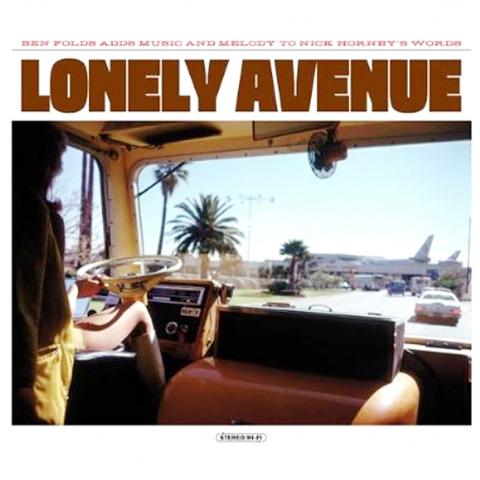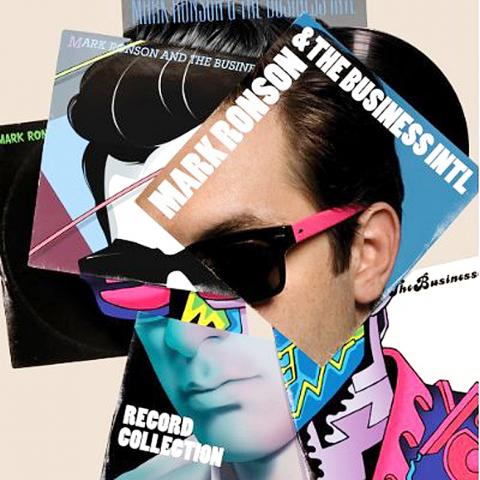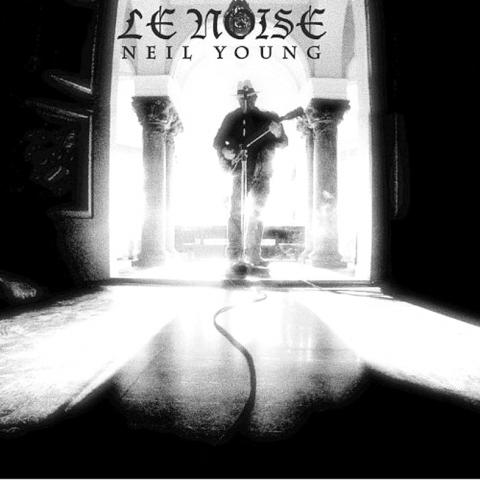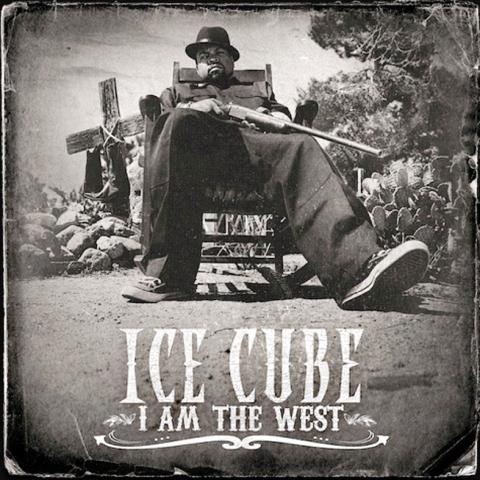Lonely Avenue
Ben Folds and Nick Hornby
Nonesuch

Belinda is a ballad about a has-been singer on the nostalgia circuit who each night performs his one hit, a love song written about a woman he later lost and now misses, which makes reprising his golden oldie for sing-a-long crowds a bizarre form of public torture.
Such is the richness of a three-verse plot when a novelist turns lyricist.
Nick Hornby (High Fidelity, About a Boy) wrote the words for the 11 songs on Lonely Avenue, and Ben Folds set them to music. The collaboration clicks: There’s a depth to the lyrics rare in pop songs, and they inspire top-notch work from the ever-inventive Folds.

Hornby finds fresh ways to approach his topics, such as on Belinda, which is both funny and sad. He writes about divorce from the perspective of the couple’s nine-year-old daughter on Claire’s Ninth, and shows sympathy for Bristol Palin’s ex in Levi Johnston’s Blues. Hornby’s lyrics are smart, profane, violent, poignant, hilarious and absolutely true.
Folds pairs them with a wide range of sounds and plenty of catchy melodies. On From Above he sings about serendipity to a finger-snapping dance beat, while Levi Johnston’s Blues is built on clattering percussion and superb arranger Paul Buckmaster’s grinding strings. As for Belinda, the coda rocks like the Ben Folds Five. — Steven Wine, AP
Record Collection

Mark Ronson & The Business Intl
RCA Music Group
Mark Ronson & The Business Intl’s Record Collection is a thumping party, but it’s the album’s eclectic guest list — including singers, songwriters and musicians — that’s worth tweeting about.

There’s a very raspy Boy George on the steel drum-tinged Somebody to Love Me, and Wu-Tang Clan rapper Ghostface Killah joins Ronson when the Grammy Award-winning producer makes his vocal debut on the love-jaded Lose It (in the End).
And while it sounds like neo-soul pioneer D’Angelo is singing from inside a fish aquarium on the sonically warped Glass Mountain Trust, the crooner’s cameo is a surprise after nearly a decade without releasing an album.
First single Bang Bang Bang, featuring Q-Tip and MNDR, is fun and upbeat — representing a shift from the horn-backed, retro soul sound that Ronson achieved with Amy Winehouse, or the melancholy mood he created with Daniel Merriweather.
The b-boy-influenced The Bike Song, and You Gave Me Nothing — which includes vocals from former Pipette Rose Elinor Dougall — reveal Ronson’s latest penchant for synthesizers and keyboards.
Record Collection is a bold shift from Ronson’s two previous studio albums, but he flourishes in the new territory. — Melanie Sims, AP
Le Noise
Neil Young
Reprise
The concept is tantalizing: Neil Young, alone with his guitar, hooks up with musician and producer of the stars Daniel Lanois in his acoustically souped-up house for an intimate, off-the-cuff recording done with no band or overdubs.
Unfortunately, the resulting pretentiously titled Le Noise mostly works better in theory than in reality. The biggest detriment is that while it sounds cool, the songs themselves are mostly not all that interesting, with a couple notable exceptions.
Love and War and Hitchhiker both find Young in a reflective mood, and coupled with Lanois’ delirious production, makes them seem all the more like they’re being transmitted in a dream.
The star of this disc is Young’s guitar and what Lanois is able to do to it. The audio effects they use, including a generous dose of echo on the vocals, can be hypnotic in small doses. Luckily they showed some restraint in keeping the disc to a concise 37 minutes, since there’s a certain sameness to the eight tracks.
Le Noise seems destined to fall into the same category of other ambitious Young projects that get high marks for distinctiveness, like Greendale and Trans, but that won’t get many repeat plays.
Walk With Me, the opening track, uses a power chord that hits the listener in the gut right out of the gate. It’s always refreshing to hear something new from an artist who’s been recording for nearly 40 years and has released 34 studio albums. — Scott Baure, AP
I Am The West
Ice Cube
Lench Mob Records
It’s been 22 years since NWA put gangsta rap on the map, and hip-hop has exploded into arguably the most diverse music genre since then.
Somebody forgot to tell Ice Cube.
His new disc I Am The West could have been recorded in 1989.
AK-47s are still the guns of choice in South Central and there’s nothing more manly than sex with multiple partners.
“This ain’t Sinatra / This ain’t Tha Carter / I am the chaperone ... who brought ya,” raps Ice Cube on one of the more boastful tracks, Drink the Kool-Aid.
Nostalgic NWA fans will buy it regardless of what is written here, but it would have been nice to see one of rap’s pioneers try something new and shake up the genre he helped develop. The booming bass and the turntable scratching will sound old-school to some, just old to others.
He’s at his best when rapping about his beloved Los Angeles. The finest tracks all feature California or West in the title. Still, it’s an album that begins with the single word “gangsta” and ends with the lyric “money or your life” fading to nothing. For all but the most diehard NWA fans, that’s not enough to put Ice Cube back in the rap conversation. — Scott Baure, AP

May 26 to June 1 When the Qing Dynasty first took control over many parts of Taiwan in 1684, it roughly continued the Kingdom of Tungning’s administrative borders (see below), setting up one prefecture and three counties. The actual area of control covered today’s Chiayi, Tainan and Kaohsiung. The administrative center was in Taiwan Prefecture, in today’s Tainan. But as Han settlement expanded and due to rebellions and other international incidents, the administrative units became more complex. By the time Taiwan became a province of the Qing in 1887, there were three prefectures, eleven counties, three subprefectures and one directly-administered prefecture, with

It’s an enormous dome of colorful glass, something between the Sistine Chapel and a Marc Chagall fresco. And yet, it’s just a subway station. Formosa Boulevard is the heart of Kaohsiung’s mass transit system. In metro terms, it’s modest: the only transfer station in a network with just two lines. But it’s a landmark nonetheless: a civic space that serves as much more than a point of transit. On a hot Sunday, the corridors and vast halls are filled with a market selling everything from second-hand clothes to toys and house decorations. It’s just one of the many events the station hosts,

Two moves show Taichung Mayor Lu Shiow-yen (盧秀燕) is gunning for Chinese Nationalist Party (KMT) party chair and the 2028 presidential election. Technically, these are not yet “officially” official, but by the rules of Taiwan politics, she is now on the dance floor. Earlier this month Lu confirmed in an interview in Japan’s Nikkei that she was considering running for KMT chair. This is not new news, but according to reports from her camp she previously was still considering the case for and against running. By choosing a respected, international news outlet, she declared it to the world. While the outside world

Through art and storytelling, La Benida Hui empowers children to become environmental heroes, using everything from SpongeBob to microorganisms to reimagine their relationship with nature. “I tell the students that they have superpowers. It needs to be emphasized that their choices can make a difference,” says Hui, an environmental artist and education specialist. For her second year as Badou Elementary’s artist in residence, Hui leads creative lessons on environmental protection, where students reflect on their relationship with nature and transform beach waste into artworks. Standing in lush green hills overlooking the ocean with land extending into the intertidal zone, the school in Keelung